Food
Vertical Farming: Everything You Need to Know
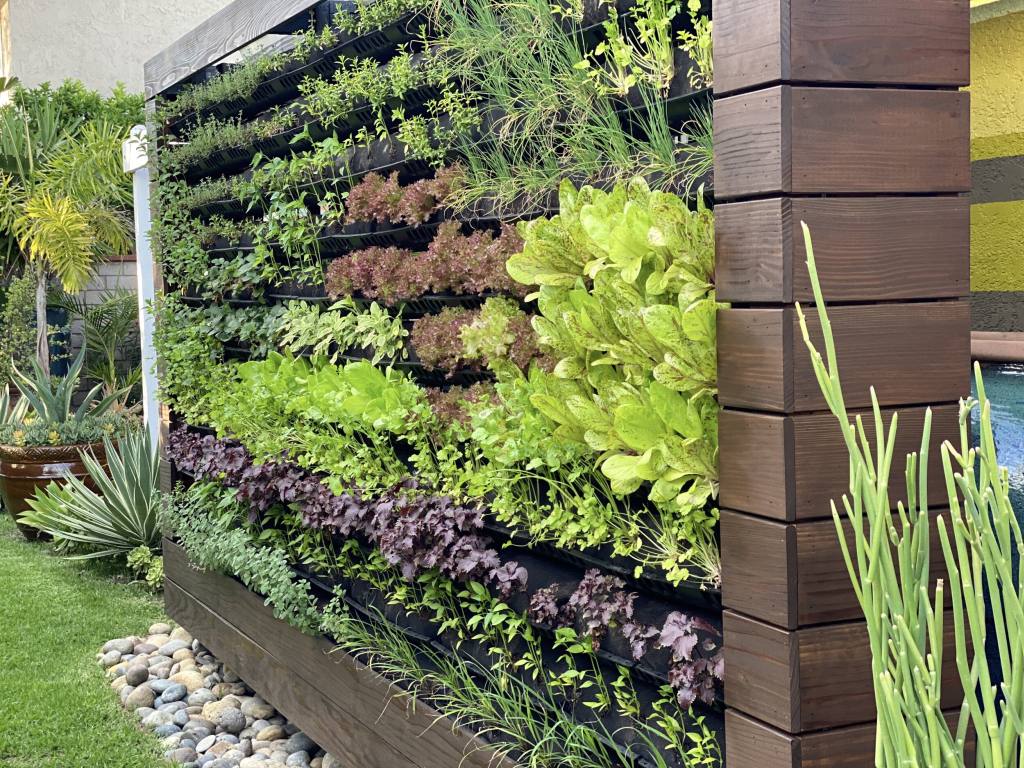
Vertical farming is revolutionizing the way we think about agriculture. As the global population continues to grow and urban spaces become more crowded, the need for sustainable food production has never been greater. Vertical farming, which involves growing crops in stacked layers or vertically inclined surfaces, offers a solution that could change the future of agriculture. This article delves into the concept of vertical farming, its benefits, the technology behind it, and the challenges it faces.
The Concept of Vertical Farming
Vertical farming is a method of growing crops in vertically stacked layers, often incorporating controlled-environment agriculture (CEA) techniques. This approach can be implemented in various structures, such as skyscrapers, repurposed warehouses, or specially designed buildings. The idea is to maximize the amount of crop yield per square foot by utilizing vertical space, which is particularly valuable in urban areas where land is limited.
This method of farming is not entirely new; the concept has been around for decades. However, recent advancements in technology and a growing awareness of sustainability have brought vertical farming to the forefront of agricultural innovation. By allowing crops to be grown in urban settings, closer to where the food is consumed, vertical farming reduces the need for long-distance transportation and the associated carbon footprint.
Moreover, vertical farming can be done year-round, regardless of weather conditions, which is a significant advantage over traditional farming methods. This consistency in production can help stabilize food supplies and prices, making fresh produce more accessible to a larger population.
Benefits of Vertical Farming
Vertical farming offers numerous benefits, both for the environment and society. One of the most significant advantages is its potential to conserve water. Traditional agriculture is highly water-intensive, but vertical farming can reduce water usage by up to 70-90%. This is achieved through the use of hydroponic, aeroponic, or aquaponic systems, where water is recirculated and used more efficiently.
Another benefit is the reduction of pesticide and herbicide use. Since vertical farming typically takes place in controlled environments, the need for chemical inputs is minimized, leading to cleaner, healthier produce. This also reduces the environmental impact of chemical runoff, which can contaminate water sources and harm wildlife.
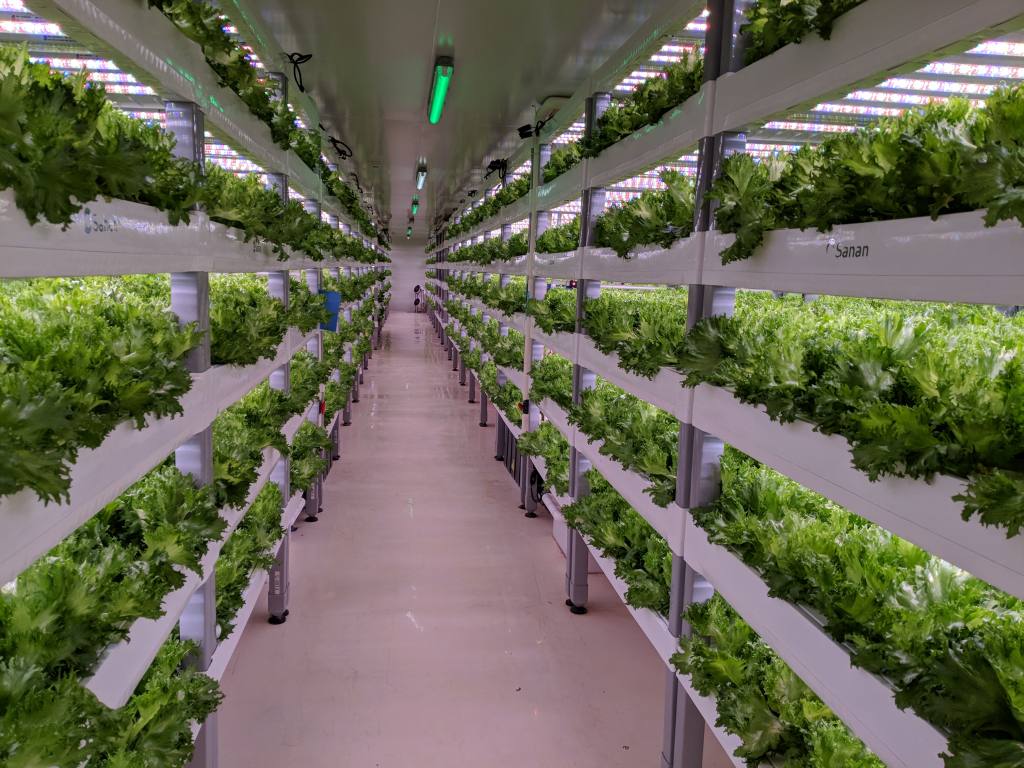
Vertical farming can also contribute to reducing food waste. By growing food closer to where it is consumed, the time between harvest and consumption is shortened, which helps to maintain freshness and reduce spoilage. Furthermore, the ability to grow food in urban settings can help address food deserts—areas with limited access to fresh, healthy food.
Additionally, vertical farming has the potential to create jobs in urban areas. As this industry grows, there will be a demand for skilled workers in various fields, including agriculture, technology, and logistics. This could provide new opportunities for employment in cities, helping to boost local economies.
Technology Behind Vertical Farming
The success of vertical farming largely depends on the technology that powers it. LED lighting is one of the key components, as it allows plants to grow in environments without natural sunlight. These lights can be tailored to emit specific wavelengths that optimize plant growth, leading to higher yields and faster production cycles.
Climate control systems are another critical aspect of vertical farming. These systems regulate temperature, humidity, and CO2 levels to create the ideal growing conditions for crops. By controlling these variables, farmers can ensure consistent crop quality and reduce the risk of disease outbreaks.
Hydroponic, aeroponic, and aquaponic systems are commonly used in vertical farming to deliver nutrients to plants without the need for soil. In hydroponics, plants are grown in a nutrient-rich water solution, while aeroponics involves misting plant roots with a nutrient solution. Aquaponics combines fish farming with hydroponics, using the waste produced by fish to provide nutrients for the plants.
Automation and artificial intelligence (AI) are increasingly being integrated into vertical farming operations. Automated systems can manage planting, watering, and harvesting, while AI can analyze data to optimize growing conditions and predict potential issues before they arise. These technologies help to improve efficiency and reduce labor costs, making vertical farming more viable on a large scale.
Challenges Facing Vertical Farming
Despite its many advantages, vertical farming is not without its challenges. One of the primary obstacles is the high initial cost of setting up a vertical farm. The technology and infrastructure required can be expensive, making it difficult for smaller companies or individuals to enter the market. However, as the industry grows and technology advances, these costs are expected to decrease.
Energy consumption is another significant concern. While vertical farming can reduce the need for transportation and water usage, the energy required to power LED lights, climate control systems, and automated equipment can be substantial. Finding ways to make vertical farming more energy-efficient, perhaps through the use of renewable energy sources, will be crucial for its long-term sustainability.
Another challenge is the limited range of crops that can be grown in vertical farms. Leafy greens, herbs, and some fruits are well-suited to this method, but staple crops like grains and root vegetables are more difficult to cultivate in a vertical setup. Expanding the variety of crops that can be grown in vertical farms will require further research and innovation.
Finally, vertical farming must overcome the perception that it is a niche or luxury product. Educating consumers about the benefits of vertically farmed produce and making it more affordable will be key to its widespread adoption. Websites and other online platforms can play a crucial role in spreading awareness and connecting consumers with locally grown, vertically farmed produce.
Conclusion
Vertical farming represents a promising solution to many of the challenges facing modern agriculture. By utilizing vertical space and advanced technology, it offers a way to produce fresh, healthy food in urban areas while conserving resources and reducing environmental impact. However, like any emerging industry, it faces hurdles that must be addressed to reach its full potential. As technology continues to evolve and awareness of sustainability grows, vertical farming may become a cornerstone of global food production, helping to feed a growing population while preserving the planet’s resources.

Food
How to Get Enough Protein Without Meat
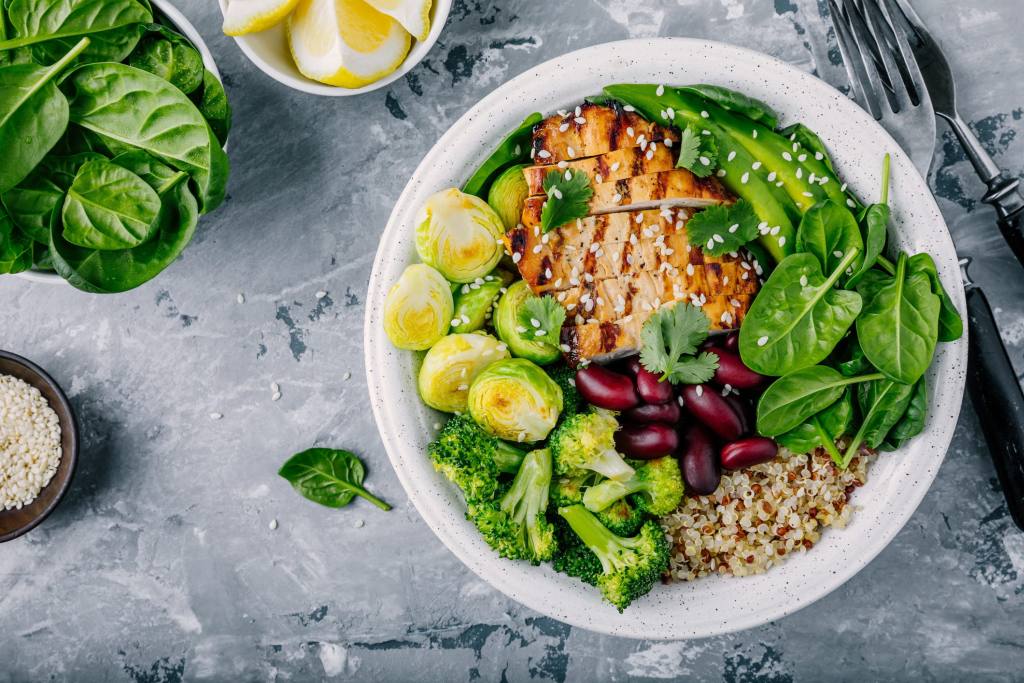
As more people embrace plant-based diets, the question of how to get enough protein without meat becomes increasingly relevant. Protein is an essential nutrient that plays a vital role in the body, from building and repairing tissues to producing enzymes and hormones. While meat is a well-known source of protein, there are plenty of other ways to meet your protein needs without it. This article explores various strategies to ensure you get enough protein on a meatless diet.
Embrace Plant-Based Protein Sources
One of the most effective ways to ensure adequate protein intake without meat is by incorporating a variety of plant-based protein sources into your diet. These sources not only provide protein but also come with additional health benefits, such as fiber, vitamins, and minerals.
Legumes, such as beans, lentils, and chickpeas, are among the most popular plant-based proteins. They are versatile, affordable, and can be used in a wide range of dishes, from soups and stews to salads and wraps. A single cup of cooked lentils, for example, contains about 18 grams of protein, making it an excellent addition to any meal.
Nuts and seeds are also rich in protein and can be easily added to your daily diet. Almonds, chia seeds, flaxseeds, and hemp seeds are all excellent choices. They can be sprinkled on top of oatmeal, blended into smoothies, or used as a topping for salads and yogurt. A quarter cup of almonds provides around 7 grams of protein, while two tablespoons of chia seeds offer about 4 grams.
Grains, particularly quinoa, farro, and bulgur, also contribute to your protein intake. Quinoa, a complete protein, contains all nine essential amino acids that your body cannot produce on its own. One cup of cooked quinoa provides 8 grams of protein, making it a great base for salads, bowls, or side dishes.
Incorporate Dairy and Eggs
For those who consume dairy and eggs, these animal products are excellent sources of high-quality protein. Including them in your diet can help ensure you meet your protein needs without relying on meat.
Eggs are a powerhouse of nutrition, offering about 6 grams of protein per large egg. They can be enjoyed in numerous ways, whether boiled, scrambled, poached, or incorporated into baked goods and other recipes. Eggs are also rich in essential nutrients like vitamin B12 and choline, which are important for brain health.
Dairy products, such as milk, yogurt, and cheese, are also packed with protein. Greek yogurt, in particular, is a standout, containing about 10 grams of protein per 100 grams. It can be eaten on its own, mixed with fruit and nuts, or used as a base for smoothies and sauces. Cheese, while higher in fat, is another good source of protein that can be used in moderation to enhance the flavor and nutritional content of meals.
For those who are lactose intolerant or prefer non-dairy options, there are plant-based alternatives such as almond milk, soy yogurt, and vegan cheese. These products are often fortified with protein, calcium, and other nutrients to match their dairy counterparts.

Explore Protein-Rich Meat Substitutes
With the rise of plant-based eating, the market for meat substitutes has expanded significantly. These products are designed to mimic the taste and texture of meat while providing a comparable amount of protein.
Tofu, tempeh, and seitan are among the most popular meat substitutes. Tofu, made from soybeans, contains about 10 grams of protein per half-cup serving. It has a mild flavor that absorbs the seasonings and sauces it is cooked with, making it a versatile ingredient in many dishes, from stir-fries to smoothies.
Tempeh, another soy-based product, is fermented and has a firmer texture and nuttier flavor than tofu. It provides around 15 grams of protein per half-cup serving and can be used in sandwiches, salads, or grilled as a meat alternative.
Seitan, also known as wheat gluten, is a protein-rich meat substitute that boasts about 25 grams of protein per 3.5-ounce serving. Its chewy texture makes it an excellent stand-in for meat in dishes like stews, stir-fries, and sandwiches. However, seitan is not suitable for those with gluten sensitivity or celiac disease.
There are also many commercially available plant-based meats, such as burgers, sausages, and chicken strips, made from ingredients like pea protein, soy, and mushrooms. These products are designed to closely resemble the taste and texture of their meat counterparts, making them a convenient option for those transitioning to a meatless diet.
Plan Your Meals for Optimal Protein Intake
Ensuring you get enough protein without meat requires a bit of planning, but it is entirely achievable with a balanced diet. The key is to include a variety of protein sources throughout the day, ensuring you get a mix of essential amino acids and other nutrients.
Start your day with a protein-rich breakfast, such as a smoothie made with Greek yogurt, chia seeds, and almond butter, or a tofu scramble with vegetables. For lunch, consider a quinoa salad with beans, nuts, and a lemon-tahini dressing. Dinner could be a hearty lentil stew with a side of whole-grain bread, or a stir-fry featuring tofu, broccoli, and brown rice.
Snacking is another opportunity to boost your protein intake. Keep options like hummus with veggie sticks, a handful of nuts, or a protein bar on hand for a quick and nutritious snack.
Additionally, websites focused on nutrition can offer meal plans, recipes, and tips to help you achieve your protein goals on a meatless diet. These resources can be invaluable in ensuring you meet your nutritional needs while enjoying a diverse and delicious array of foods.
Conclusion
Getting enough protein without meat is not only possible but can also be enjoyable and nutritious. By incorporating a variety of plant-based protein sources, dairy, eggs, and meat substitutes into your diet, you can easily meet your protein needs. Planning your meals thoughtfully and exploring new foods and recipes will ensure that your diet is balanced and satisfying. Embracing a meatless lifestyle is a step towards better health and sustainability, and with the right strategies, you can thrive on a plant-based diet.
Food
The Role of Macronutrients in a Balanced Diet

A balanced diet is the cornerstone of good health, providing the essential nutrients your body needs to function optimally. Among these nutrients, macronutrients play a crucial role in maintaining energy levels, supporting growth, and ensuring overall well-being. This article explores the importance of macronutrients—carbohydrates, proteins, and fats—in a balanced diet, and how to incorporate them into your daily meals effectively.
Carbohydrates: The Body’s Primary Energy Source
Carbohydrates often get a bad reputation, especially with the rise of low-carb diets, but they are a fundamental part of a balanced diet. Carbohydrates are the body’s primary source of energy, fueling everything from basic metabolic functions to intense physical activities. They are broken down into glucose, which is used by the body’s cells, tissues, and organs to produce energy.
There are two main types of carbohydrates: simple and complex. Simple carbohydrates, found in foods like fruits, milk, and sugary snacks, are quickly absorbed by the body, providing a rapid source of energy. However, they can also cause spikes in blood sugar levels. Complex carbohydrates, on the other hand, are found in whole grains, legumes, and vegetables. These take longer to digest, providing a steady release of energy and helping to keep you fuller for longer periods.
Incorporating a variety of complex carbohydrates into your diet is essential for maintaining energy levels throughout the day. Opt for whole grains like brown rice, oats, and quinoa, and pair them with a variety of vegetables to ensure you’re getting a wide range of nutrients. A well-designed meal plan, such as those found on nutrition-focused websites, can help you balance your carbohydrate intake to meet your energy needs.
Proteins: Building and Repairing the Body
Proteins are the building blocks of life, playing a critical role in the growth, repair, and maintenance of tissues. They are made up of amino acids, some of which are essential, meaning they must be obtained through the diet because the body cannot produce them on its own.
Protein needs vary depending on factors like age, activity level, and overall health. Athletes and those engaged in regular physical activity may require more protein to support muscle repair and growth. However, everyone needs a baseline level of protein to maintain healthy skin, hair, nails, and organs.

Animal-based proteins, such as meat, poultry, fish, eggs, and dairy, are complete proteins, meaning they contain all nine essential amino acids. Plant-based proteins, found in foods like beans, lentils, tofu, and quinoa, can also provide all essential amino acids when eaten in combination or by selecting complete plant proteins like quinoa.
Incorporating a variety of protein sources into your meals helps ensure you’re getting all the amino acids your body needs. For those following a vegetarian or vegan diet, combining different plant-based proteins can help achieve a complete amino acid profile. Ensuring an adequate intake of protein is vital for everyone, regardless of dietary preferences.
Fats: Essential for Hormone Production and Nutrient Absorption
Fats often carry a negative connotation, but they are essential for many bodily functions, including hormone production, nutrient absorption, and cellular health. There are different types of fats, some of which are more beneficial than others.
Unsaturated fats, which include monounsaturated and polyunsaturated fats, are considered healthy fats. They are found in foods like avocados, nuts, seeds, and fatty fish like salmon and mackerel. These fats can help reduce inflammation, lower bad cholesterol levels, and support heart health.
Saturated fats, found in animal products like butter, cheese, and red meat, should be consumed in moderation. While they are not as harmful as once believed, excessive intake can increase the risk of heart disease. Trans fats, often found in processed and fried foods, should be avoided as they can raise bad cholesterol levels and contribute to heart disease.
Including healthy fats in your diet is crucial for absorbing fat-soluble vitamins (A, D, E, and K) and supporting brain health. A balanced diet should incorporate sources of unsaturated fats, such as olive oil, nuts, seeds, and fish, while limiting saturated and trans fats.
Balancing Macronutrients for Optimal Health
Achieving the right balance of macronutrients—carbohydrates, proteins, and fats—is key to maintaining overall health and well-being. While individual needs may vary, a general guideline is to aim for a diet where carbohydrates make up about 45-65% of your daily calorie intake, proteins 10-35%, and fats 20-35%. This balance ensures that your body receives the energy it needs, along with the necessary building blocks for growth, repair, and maintenance.
It’s important to note that the quality of macronutrients is just as important as the quantity. Focusing on whole, unprocessed foods that are rich in nutrients will help you achieve better health outcomes. For example, choose whole grains over refined grains, lean proteins over processed meats, and unsaturated fats over trans fats.
Meal planning can be a helpful tool in ensuring you’re getting the right balance of macronutrients. Websites offering tailored nutrition advice can provide valuable guidance on how to create balanced meals that meet your specific needs and preferences.
Conclusion
Macronutrients—carbohydrates, proteins, and fats—are the building blocks of a balanced diet. Each plays a unique and vital role in maintaining energy levels, supporting bodily functions, and promoting overall health. By understanding the importance of these macronutrients and learning how to incorporate them into your daily meals, you can create a diet that supports your long-term well-being. Whether you’re looking to improve athletic performance, manage your weight, or simply feel better day-to-day, focusing on a balanced intake of macronutrients is a key step toward achieving your goals.
Food
What is Gleaning

Gleaning is an ancient practice with modern relevance, offering a unique way to reduce food waste and support those in need. Traditionally, gleaning involved collecting leftover crops from farmers’ fields after the main harvest had been completed. These remnants, which might otherwise go to waste, were gathered by the poor or by volunteers and distributed to those in need. Today, gleaning has evolved into an organized effort that addresses food insecurity and environmental sustainability. Understanding the importance of gleaning and how it works can inspire more people to participate in this valuable activity.
The Historical Roots of Gleaning
The practice of gleaning dates back thousands of years and is rooted in various cultural and religious traditions. In ancient times, it was common for landowners to leave a portion of their crops unharvested so that the poor, widows, and strangers could collect food for themselves. This practice was seen as a form of social justice, ensuring that even those without land or resources had access to food.
In the Bible, for example, the Book of Leviticus instructs farmers to leave the edges of their fields unharvested for the poor and the foreigner to glean. Similarly, in ancient Greece and Rome, laws and customs encouraged landowners to allow gleaning as a way to support the less fortunate. Gleaning was not only a charitable act but also a practical one, as it reduced waste and ensured that more of the food produced was consumed.
While the practice of gleaning may seem like a relic of the past, its principles are just as relevant today. As our society faces challenges such as food waste and hunger, gleaning offers a time-tested solution that can help address these issues.
Modern Gleaning: A Response to Food Waste
In today’s world, gleaning has taken on new significance as a response to the growing problem of food waste. According to the Food and Agriculture Organization (FAO), approximately one-third of all food produced for human consumption is lost or wasted. This not only represents a massive loss of resources but also contributes to environmental issues such as greenhouse gas emissions and land degradation.

Modern gleaning initiatives aim to recover surplus food from farms, markets, and even grocery stores, redistributing it to those who need it most. Volunteers play a crucial role in these efforts, often working with farmers and food banks to collect, sort, and distribute gleaned produce. This helps ensure that food that might otherwise go to waste is instead used to feed people.
Organizations dedicated to gleaning have sprung up in many communities, connecting volunteers with local farmers and food banks. These groups often organize gleaning events, where volunteers come together to harvest crops that might otherwise be left in the fields. By participating in these efforts, volunteers can make a tangible difference in reducing food waste and combating hunger.
The Impact of Gleaning on Communities
Gleaning has a profound impact on both the environment and the communities it serves. By rescuing surplus produce, gleaning helps to reduce the amount of food that ends up in landfills, where it would contribute to methane emissions, a potent greenhouse gas. Instead, this food is redirected to food banks, shelters, and community kitchens, where it can nourish those who might otherwise go hungry.
For farmers, gleaning offers a way to give back to their communities while also reducing waste on their farms. Many farmers participate in gleaning programs because they believe in the importance of sharing their bounty with others. Additionally, gleaning can help farmers manage their fields more effectively by clearing leftover crops and reducing the risk of pests or disease.
On the community level, gleaning brings people together, fostering a spirit of cooperation and mutual aid. Volunteers often find that participating in gleaning not only allows them to help others but also connects them with like-minded individuals who share their values. These connections can strengthen community bonds and inspire further acts of service and charity.
How to Get Involved in Gleaning
For those interested in getting involved in gleaning, there are many ways to start. First, consider reaching out to local food banks, farmers’ markets, or agricultural organizations to see if they have any gleaning programs in place. Many communities have established gleaning groups that coordinate volunteer efforts, making it easy to join in.
Volunteers are typically needed to help with harvesting, sorting, and distributing gleaned produce. The time commitment can vary, but even a few hours of volunteer work can make a significant difference. Whether you have experience in farming or are simply looking for a way to give back, there’s likely a role for you in a gleaning initiative.
Additionally, some websites offer resources and information about gleaning, including how to start your own gleaning group or find opportunities in your area. Volunteering in this way not only helps reduce food waste but also ensures that more people have access to fresh, healthy produce.
Conclusion
Gleaning is a practice with deep historical roots that continues to offer solutions to modern challenges like food waste and hunger. By participating in gleaning, individuals can help ensure that surplus food is put to good use, benefiting both the environment and those in need. Whether you’re interested in volunteering, supporting local farmers, or simply learning more about sustainable practices, gleaning provides a meaningful way to make a positive impact on your community. For more information on how to get involved in gleaning and other volunteer opportunities, visit our website and discover how you can contribute to this important cause.
-
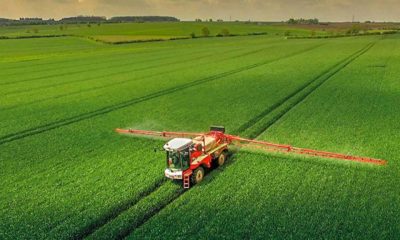
 Technology2 years ago
Technology2 years agoNew Agriculture Technology in Modern Farming
-
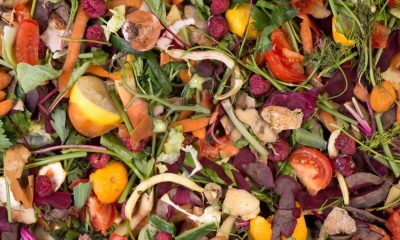
 Food2 years ago
Food2 years agoFighting Restaurant Food Waste with Technology
-

 Lifestyle1 year ago
Lifestyle1 year agoBackpack Essentials for Returning to School
-

 Education2 years ago
Education2 years agoTips To Support Underserved Students
-
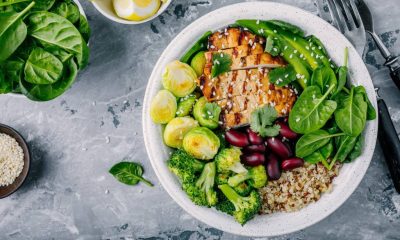
 Food1 year ago
Food1 year agoHow to Get Enough Protein Without Meat
-

 Education2 years ago
Education2 years agoInnovative Learning Strategies for the Digital Age
-

 Fitness1 year ago
Fitness1 year agoFueling Your Body for Optimal Performance
-

 Fitness1 year ago
Fitness1 year agoEffective Appetite Control for Enhanced Fitness Results



